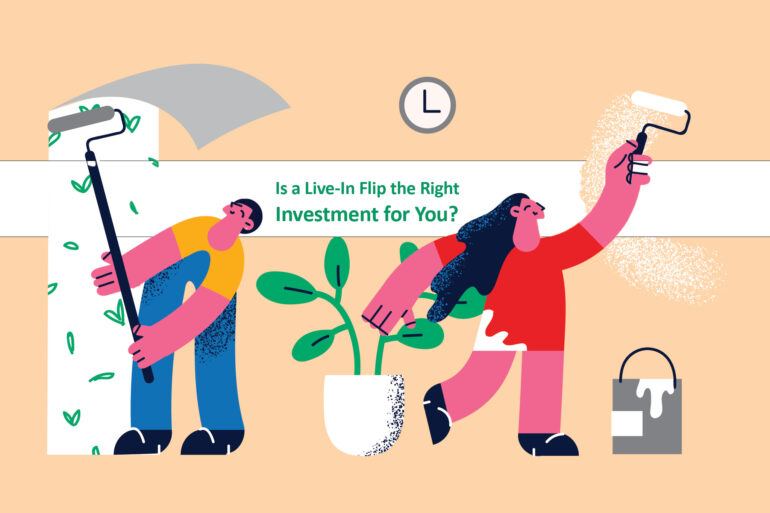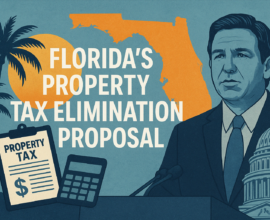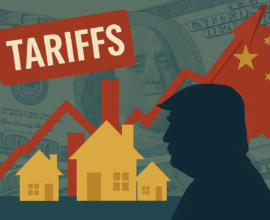Is a Live-In Flip the Right Strategy for You as an Investor
So, You Want to Be a Real Estate Investor?
There are plenty of ways to invest in real estate, depending on your current lifestyle, some may be more appealing than others.
For more hands-off approaches, check here. To learn more about beginning real estate investing, check here. Today, I’m here to talk to you about a bolder type of investment, the live-in flip.
What Is a Live-In Flip?
It’s pretty much what it sounds like, flipping a property that you live in throughout the process. Investors who go this route have a lot of reasons, but many avoid it. Let’s take a closer look.
A lot of flippers have taught themselves how to do different types of renovations.
The Benefits
1. Taxes
Possibly the number one reason people choose this strategy is to avoid hefty taxes. If you are investing in a property outright, you are subject to income taxes. However, if you live in it as your primary residence for two out of the previous five years, you can avoid income and capital gains taxes (up to $250,000 or $500,000 for a married couple).
To read up about it, click here.
2. Less Pressure
You aren’t rushing against the clock, so you can begin recouping all the months you paid a mortgage with no revenue. Essentially, your housing expenses are an investment you can later regain. Free housing anyone?
While you may have other reasons to wrap up your flip, you’ll be parked there for two years anyway. So, whether you repaint the foyer today or next Monday isn’t going to make a big difference.
3. No Commute
A lot of investors like to check on the progress of their flips. Well…for you that could mean just walking to the kitchen! Whether you’re doing the improvements yourself or not, you will have a front-row seat.
4. An Optional DIY Education
For those who know about electrical or plumbing, this is a great way to use their skills and save a pretty penny. When it comes to the rest of us, YouTube can become our best friend. A lot of flippers have taught themselves how to do different types of renovations. They end up with their profits and new skills.
While this may be a part of some flipping journeys, many successful flippers hire contractors to do the work. Acting as a project manager throughout the process, they keep a close eye on the progress without ever putting on a tool belt.
5. More Financing Choices
If you’re going to use this as your primary residence, you will have financing options unavailable to other investors. This can mean less money down or lower interest rates. However, most traditional loans will require a home to be habitable, which can limit the properties you have to choose from.
Downsides
Make sure you understand the lifestyle changes this will entail for you.
1. Having a Messy Life
The mess associated with living in an active construction site is not for everyone. Personally, if there is clutter, debris, or open drywall in my home, I get pretty antsy.
Make sure you understand the lifestyle changes this will entail for you.
2. No Boundaries
Speaking of lifestyle changes, your work/life balance is about to get a little blurry. If you are working where you live, it can be difficult to draw that line.
A good strategy is to limit the construction to one room or area of the home and keep the rest livable or at least a space where you can go to relax.
Don’t go making your dream home when you are planning to sell in six months or a couple of years.
3. Attachment
Sometimes, it can be hard to let go of our creations. Whether you’ve done the work or hired it out, you poured effort into creating this space.
Make sure to keep the updates and renovations you do simple. Don’t go making your dream home when you are planning to sell in six months or a couple of years. That can make it a lot harder to walk away.
4. Limited Scalability
If you’re maximizing the tax benefits and only moving every two years, this can be tough to scale.
Yes, you can level up the type of property you buy each time, but you’re still only flipping one property at a time this way.
5. Always Moving
That said, you will most likely be moving every two years to maintain this investment strategy and continue flipping. If you don’t like moving, that may be a problem.
Do yourself a favor and get a thorough home inspection to avoid any surprises.
6. Hidden Problems
This is a risk with any property. How many horror stories have you heard about foundations or roofs or some weirdness hiding under a fresh coat of paint?
Homes that are clear fixer-uppers have a higher risk of more issues lurking beneath the surface. Do yourself a favor and get a thorough home inspection to avoid any surprises.
An Example
Let’s talk about my unintentional flip. I moved into a home several years ago intending to in it forever…then things changed. I decided to make the most of my investment when selling.
My husband and I are by no means expert craftspeople. So, our work on the property was mostly cleaning, painting, and caulking. We also did extensive landscaping and hauled hundreds of pounds of junk.
We hired professionals to do some work, replacing drywall, changing a few light fixtures, and replacing the flooring in half the house.
We ended up with a tidy profit that helped us continue living mortgage free in our next home.
Last Words of Advice
It’s hard to get that when you are constantly surrounded by works in progress. Schedule nights off or weekend getaways whenever possible.
If you think this all sounds like a dream, here are some things to consider before beginning your live-in flip.
- Get a tool belt — If you plan on a DIY flip, you need to be able to find the tools you need when you need them.
- Prepare for dust — Between demolition and drywall installation, life is about to get messy. Keep your stuff out in the garage or someplace else.
- Tidy up — You don’t want drywall dust or sawdust all over your home. Get some doormats and take off your work boots before entering your stress-free zone.
- Vacation — We all need breaks sometimes. It’s hard to get that when you are constantly surrounded by works in progress. Schedule nights off or weekend getaways whenever possible.
- Time — Do you have the time to devote to this potentially full-time job with your current lifestyle? Could you subcontract the work, and what would that look like?
- Skills — Do you have the necessary skills to do this, or are you willing to learn them ? If not, are you able to afford a contractor to do these tasks?
- Roommates — Whether they are your family or friends, whoever lives with you must be on board.
Add up The Numbers
One final note on the numbers: let’s say you decide you’re ready for this next step, you’ve got your toolbelt, and you’re ready to get to work. Even if you only make $90,000 after sinking $80,000 into this investment, that is $10,000 of profit and two years of free housing, which you can now roll into your next investment.
It can be a short-term strategy for you until you have enough to buy the home you want. Or this could be your life. Whatever you choose, you’ll be house-hacking yourself to financial freedom. Keep that in mind while planning your investment strategy for 2023. Also, check out how to price your flip once the hard work is done, and it’s time to move on to your next project.








